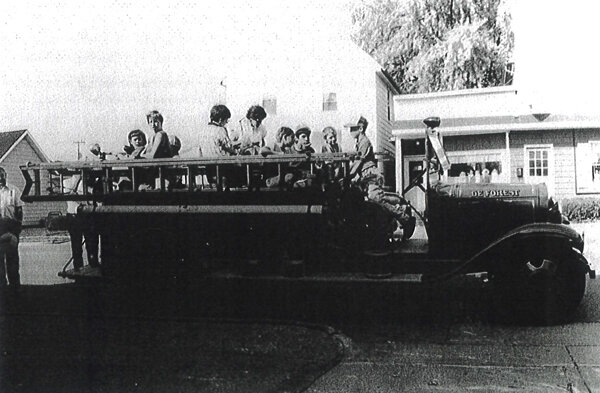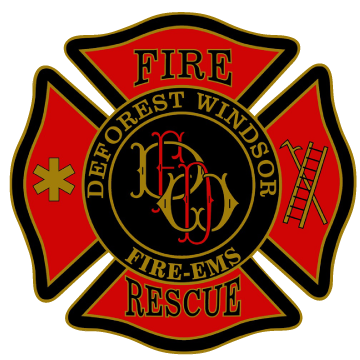
Frequently Asked Questions
When I call for an ambulance, why do I sometimes see an ambulance from another town?
DeForest Windsor Fire and EMS has mutual aid agreements with many neighboring towns so that calls are handled expeditiously. It is not unusual for two or three calls for an ambulance to come in at the same time. If all DWFD’s ambulances are busy, the next closest ambulance will be dispatched. We also rely on neighboring EMS providers licensed at the Paramedic level to provide ALS (Advanced Life Support) level care. You may see ambulances and equipment from Sun Prairie, Waunakee, City of Madison, etc. The mutual aid agreements work both ways and DWFD ambulances and fire trucks can be dispatched to the other municipalities.
When I call an ambulance, why does a fire engine or law enforcement officer sometimes come as well?
All firefighters are trained to assist ambulance personnel with lifting or carrying equipment and patients. Law enforcement officers are also available to assist ambulance personnel with caring for the patient or making sure the scene is safe for our personnel to enter.
How does the strength of fire protection in the community affect property owners’ insurance policy premiums?
Part of the premium is determined by the strength of the fire protection provided to the property by the fire department. The quality of fire protection for a given area is determined by an organization sponsored by the insurance industry. This organization is known as the Insurance Services Office (ISO). ISO grades fire protection for an area on a 1 to10 grading system (1 being the best). The DeForest Windsor Fire and EMS Department has an ISO Class 4 rating.
The alarm on my carbon monoxide detector just went off, what do I do?
Check the unit and batteries for proper functioning. An explanation of what a “beep” means is usually on the label. If everything appears to be working properly, call 911 immediately. Carbon monoxide is a tasteless, odorless gas, and over exposure can result in death. You should test your carbon monoxide alarms along with your smoke alarms every month and change the batteries every six months.
Why do firefighters break windows and cut holes in roofs when the fire is inside a building?
It may appear that by breaking windows or cutting holes in roofs cause more damage than the actual fire. However, internal building fires create a lot of heat and smoke and firefighters must remove the heat and smoke before they can get close enough to put out the fire. Heat and smoke rise, so cutting a hole in the roof and breaking out windows in planned locations force smoke to vent upwards, allowing cool air to enter the building from below. This is called “ventilation”. This also improves visibility and lowers heat conditions for the firefighters inside, allowing them to extinguish the fire quickly and safely. Heat and smoke can cause extensive damage; ventilation will reduce overall damage to a building and contents.
I need to take a CPR course, does the DeForest Windsor Fire and EMS Department teach courses?
Yes, we offer American Heart Association CPR and First Aid courses. Please see our education page for information on scheduling a class.
Can I schedule a fire engine presentation or station tour?
Yes, please see our education page for information on scheduling a presentation or tour.
I am a resident of DeForest, am I allowed to have a fire pit?
This is a summary of DeForest Ordinance and is not intended to be all inclusive. Please review Chapter 5, specifically 5.23 OPEN BURNING, for the complete ordinance and regulations.
A "fire pit" includes below ground pits, freestanding fireplaces, and portable devices intended to contain and control outdoor fires.
All below ground fire pits shall be at least four (4) inches in depth, and shall be surrounded on the outside, aboveground, by a non-combustible material such as steel, brick, or masonry.
The fire pit cannot exceed three (3) feet in diameter, nor may the fire pile exceed two (2) feet in height.
Only natural firewood, or commercial logs may be burned. o Burning of lumber, pallets, scrap wood, tree trimmings, leaves, yard waste, paper, cardboard, garbage, and similar items is prohibited.
All fire pits must be located away from any structure or combustible material. o Below ground fire pits and free-standing fireplaces must be located a minimum of twenty-five (25) feet away from any structure or combustible material. o Portable fire pits must be located a minimum of fifteen (15) feet away from any structure or combustible material.
Any fire must be constantly attended and supervised until the fire has been completely extinguished.
A portable fire extinguisher or other approved extinguishing equipment such as a garden hose must be readily available.
Please direct any questions to Assistant Chief Kraig Knapp at kknapp@deforestwindsorfire.com or 608-846-4364 Monday - Friday
